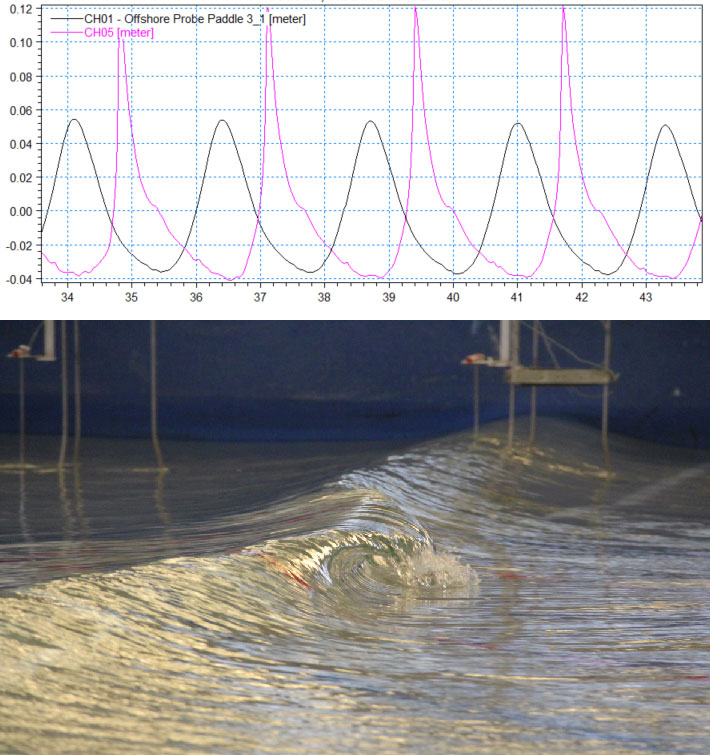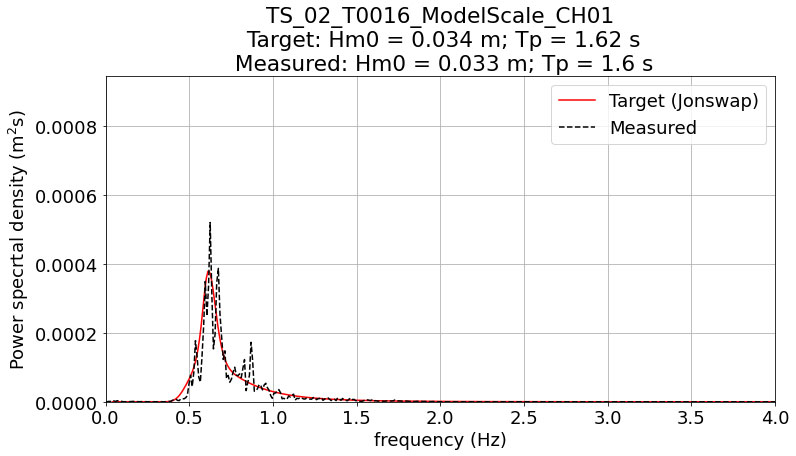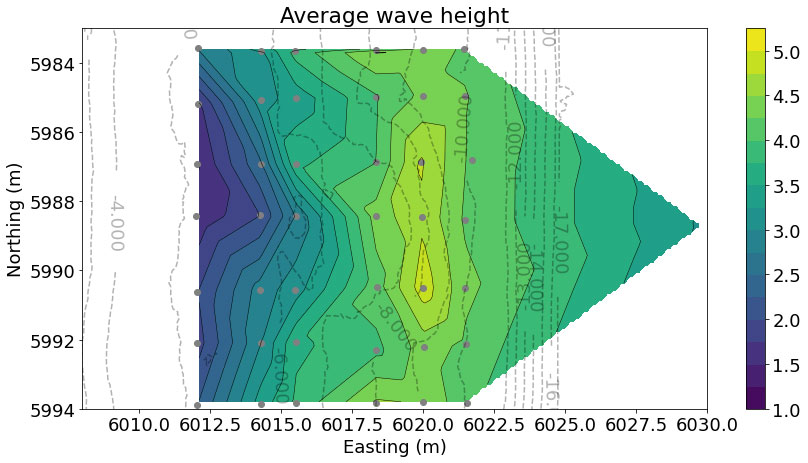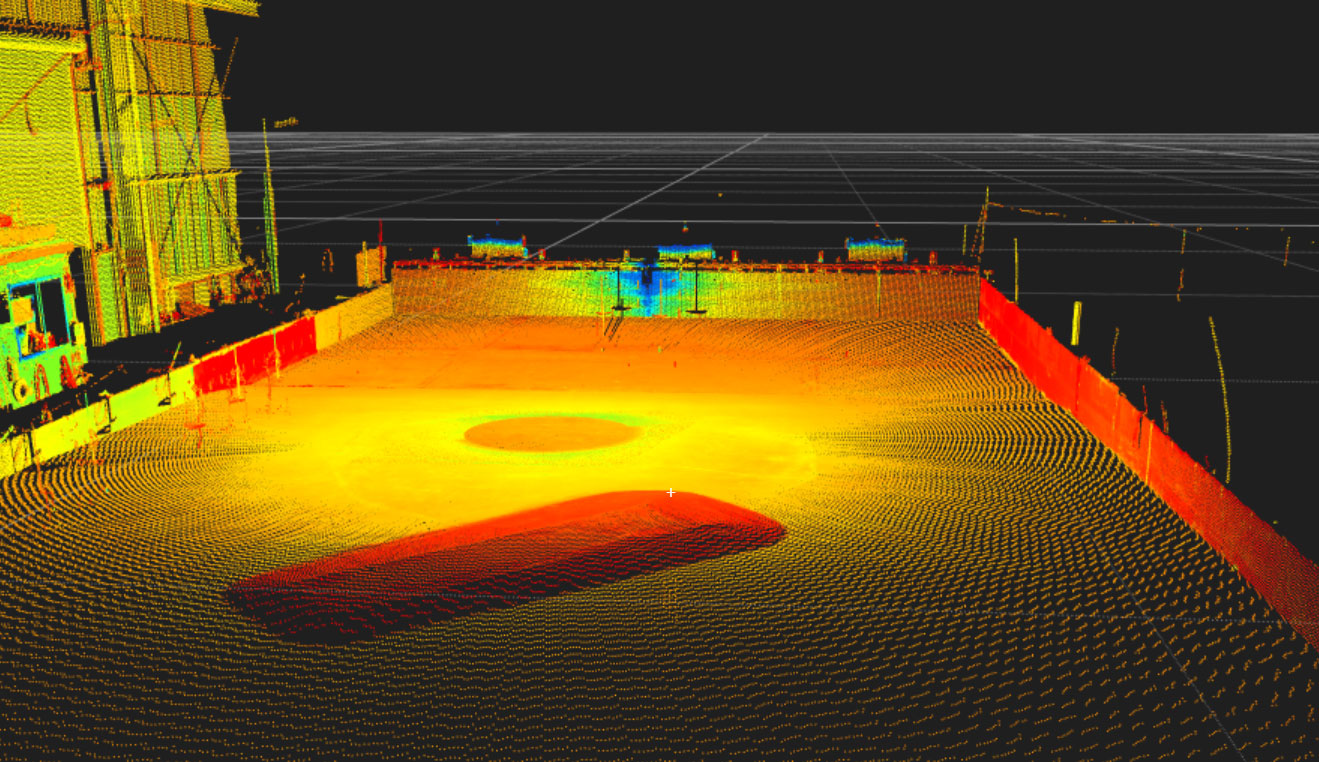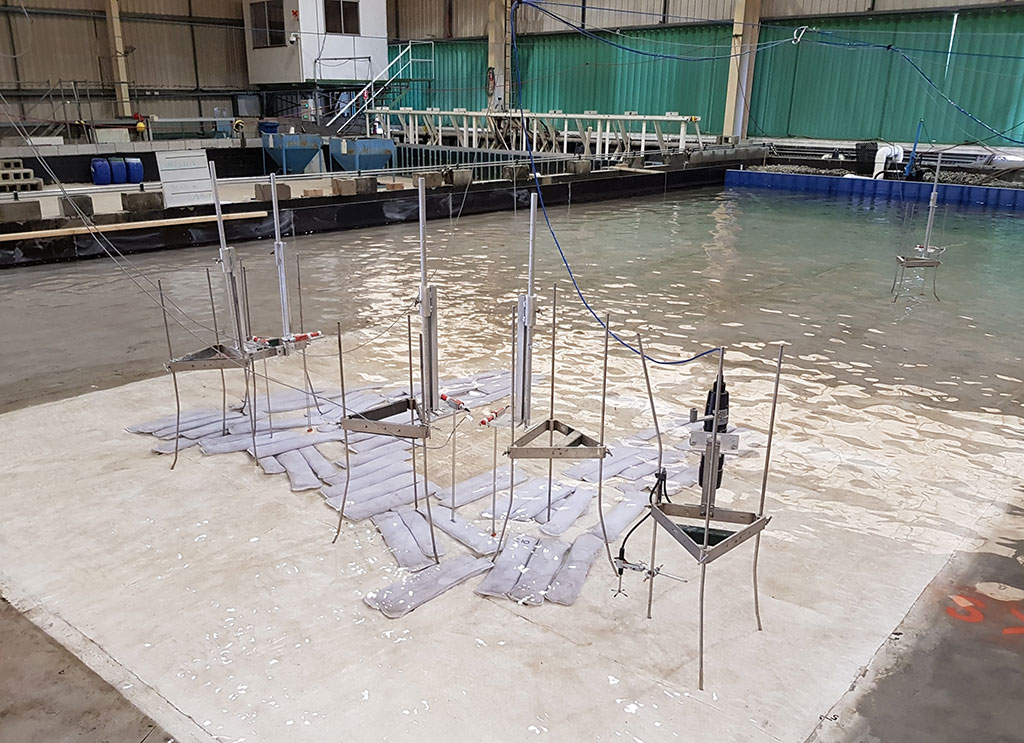Data collection and processing
The QGHL has various devices and software for assisting with data collection, including:
- 16 wave probes
- 2 Nortek Vectrino Acoustic Doppler Velocimeters (ADVs)
- 1 Leica MS60 total station (includes laser scanner)
- Video cameras (including GoPro)
- Digital SLR camera
- Electromagnetic and mechanical flowmeters
- DHI WS Online
- DHI Mike Zero wave analysis toolbox
- HR Wallingford HRDAQ
- Python and Matlab for undertaking more customized analyses.
Collected data is stored and processed to obtain the necessary information required by the project. Data collection examples:
- Waves are usually measured using wave gauges. The QGHL has a range of capacitance and resistance type wave gauges.
- ADVs are used to capture three-dimensional current data at a point in the model. These can be useful to determine directional wave spectra and mean currents.
- Video cameras capture footage of model tests and may be used to review tests after completion. We can also use video footage to investigate mean currents (e.g. rips) by tracking dye clouds. We also regularly use photos or video frames to determine progressive damage to structures (e.g., rocks and sandbags) occurring under wave attack.
- The Leica MS60 total station with laser scanner is regularly used to measure model bathymetry and features. In addition, scanning mobile structures (such as breakwaters) before and after tests can be used to quantify volumetric changes.



